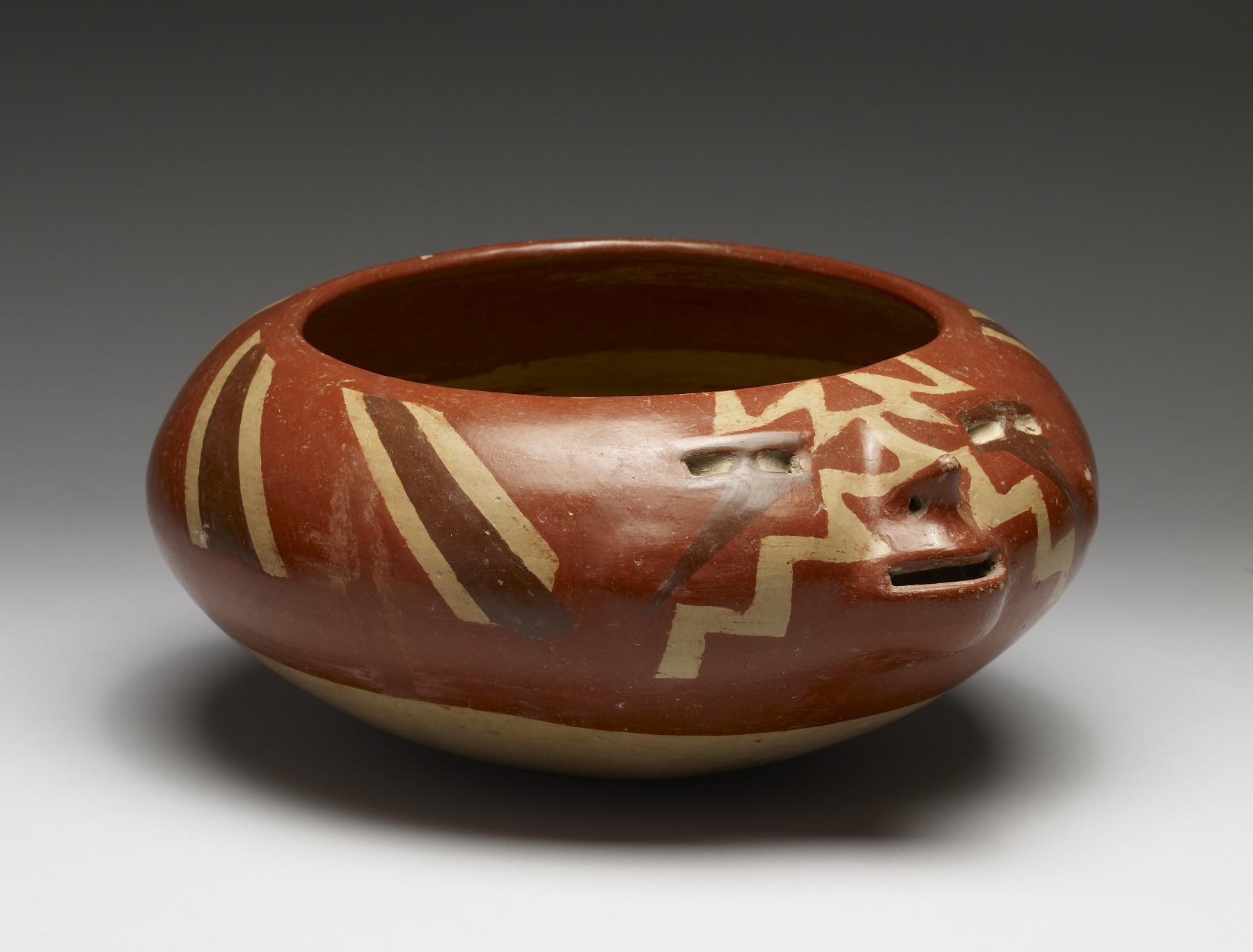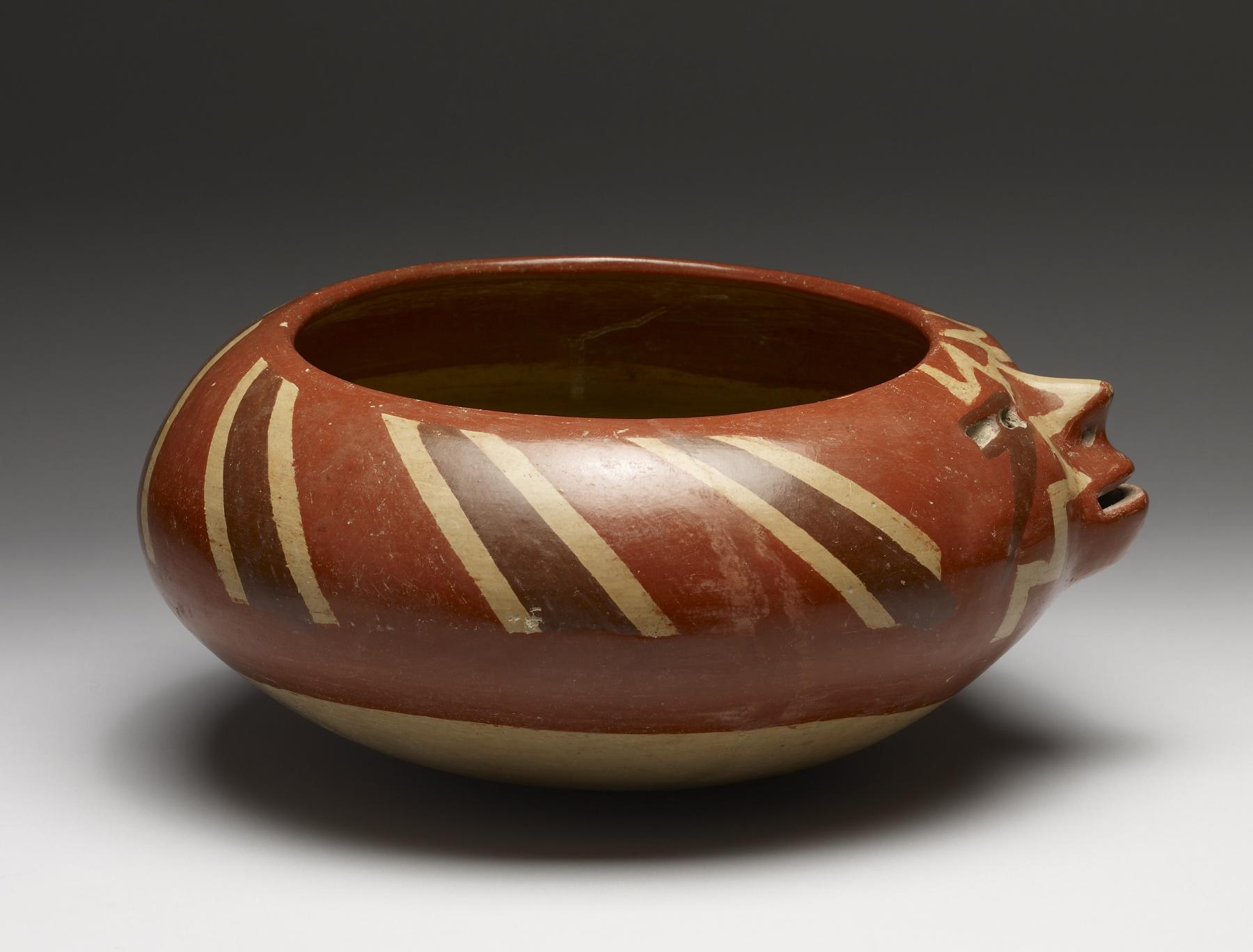Bowl
(Ancient Americas )
Chupícuaro towns were no mere village hamlets. Many were populous centers, highly organized and maintained by a hierarchy of administrators and operatives. The society is renowned for an exceptionally sophisticated ceramic tradition featuring large quantities of startling human (mostly female) figural effigies and everyday food-service vessels of notable aesthetic appeal. The wide variety of vessel forms and their decoration point to the importance of the feast, not only to supply food for the soul's journey to the underworld but also among the living as an integral part of social politics. Throughout ancient Mesoamerica, feasts provided an effective stage for a wide variety of sociopolitical activities focused on solidifying relations, forming alliances, and affirming expectations of reciprocity in all matters of support. Chupícuaro ceramics elevate objects intended for daily use into highly sophisticated artistic achievements, as exemplified by this bowl's elegant form and boldly painted decoration. Its rounded shape and lack of neck, a vessel form called a tecomate, recalls the gourd, the quintessential food-service vessel throughout the ancient Americas and among most indigenous societies the world over. The Chupícuaro artist personified the vessel by adorning it with a modeled humanoid visage that simultaneously emerges from and recedes into the tecomate's walls. The integration of an animated human face with a common vessel form infuses the container with life force, the face symbolizing essence and soul power.
Provenance
Provenance (from the French provenir, 'to come from/forth') is the chronology of the ownership, custody, or location of a historical object. Learn more about provenance at the Walters.
Vincent Price collection [date and mode of acquisition unknown]; Ron Messick Fine Arts, Santa Fe, New Mexico [date and mode of acquisition unknown]; John G. Bourne, 1997, by purchase.
Exhibitions
| 2012-2013 | Exploring Art of the Ancient Americas: The John Bourne Collection Gift. The Walters Art Museum, Baltimore; Frist Center for the Visual Arts, Nashville. |
Geographies
Mexico, Guanajuato (Place of Origin)
Measurements
H: 5 3/16 x W: 11 x D: 11 13/16 in. (13.2 x 28 x 30 cm)
Credit Line
Gift of John G. Bourne, 2014
Location in Museum
Not on view
Accession Number
In libraries, galleries, museums, and archives, an accession number is a unique identifier assigned to each object in the collection.
In libraries, galleries, museums, and archives, an accession number is a unique identifier assigned to each object in the collection.
2009.20.209






